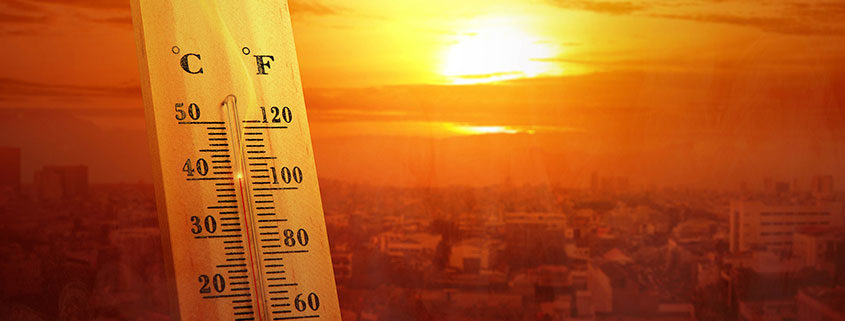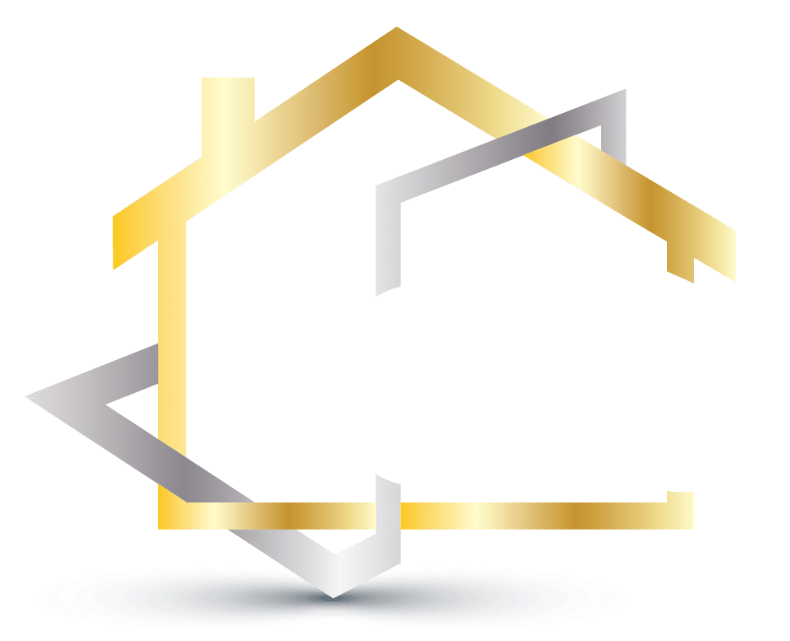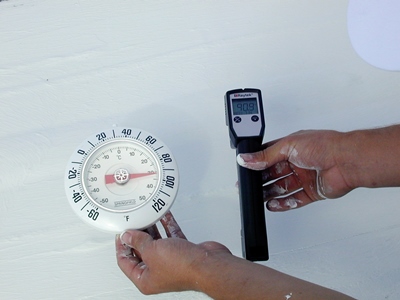Commercial roofs are designed to withstand various weather conditions, including heat. However, excessive heat can take a toll on even the most robust roofing systems. Understanding how heat affects a commercial roof is crucial for building owners and facility managers to ensure the longevity and performance of their roofing investment. In this blog post, we will explore the impact of heat on commercial roofs, the challenges it poses, and effective ways to mitigate its adverse effects.


Thermal Expansion and Contraction:
One of the primary ways heat affects commercial roofs is through thermal expansion and contraction. When the sun beats down on a roof, it causes the roofing materials to heat up and expand. As temperatures cool during the night or due to sudden weather changes, the roof contracts. This continuous expansion and contraction can lead to the weakening of roofing materials over time, ultimately resulting in cracks, splits, and overall roof damage.
UV Radiation Damage:
The sun’s ultraviolet (UV) rays can be particularly harsh on roofing materials. Prolonged exposure to UV radiation can cause roofing materials to deteriorate, lose their color, and become brittle. This can lead to the premature failure of the roofing system, reducing its lifespan and requiring costly repairs or replacements.

Increased Energy Costs:
A poorly insulated or reflective roof can absorb a significant amount of heat, leading to increased indoor temperatures. This forces HVAC systems to work harder to maintain a comfortable environment, causing higher energy bills. To counteract this effect, commercial building owners may need to invest in energy-efficient roofing solutions to reduce the heat load on their buildings.
Roofing Material Degradation:
Different roofing materials react differently to heat. For instance, asphalt shingles may blister and curl under high temperatures, while single-ply membranes like EPDM or TPO can become soft and lose their structural integrity. Understanding the specific vulnerabilities of your roofing material is crucial for effective heat management.

Moisture Issues:
Heat can also exacerbate moisture-related problems on commercial roofs. High temperatures can accelerate the evaporation of trapped moisture within the roofing system, leading to condensation and potential leaks. Proper roof ventilation and insulation are essential to mitigate these moisture issues.
Roof Coatings:
Applying reflective or cool roof coatings can significantly reduce heat absorption by reflecting a higher percentage of solar radiation. These coatings can help maintain lower roof temperatures, decrease energy costs, and extend the lifespan of the roofing system.
Insulation and Ventilation:
Proper insulation and ventilation are essential for managing heat-related issues. Adequate insulation helps regulate temperature and reduces the heat transfer from the roof into the building. Effective ventilation systems prevent moisture buildup and reduce the risk of condensation.
Regular Roof Inspections and Maintenance:
Frequent inspections and proactive maintenance are key to identifying and addressing heat-related issues early. Inspecting the roof for signs of damage, wear, or deterioration can prevent minor problems from turning into major, costly repairs.
Roofing Material Selection:
When installing or replacing a commercial roof, consider the local climate and choose roofing materials that are better suited to withstand high temperatures. Some roofing materials, like metal roofing or cool roofing systems, are specifically designed to provide better heat resistance.
Seek Professional Advice:
Consulting with a professional roofing contractor or roofing expert is crucial for making informed decisions about your commercial roof. They can assess your specific roofing system, recommend suitable solutions, and provide guidance on heat management strategies.
Heat can have a significant impact on commercial roofs, leading to issues such as thermal expansion, UV damage, increased energy costs, material degradation, and moisture problems. However, with the right strategies and precautions, these effects can be mitigated. Regular maintenance, reflective coatings, proper insulation, and material selection are key components in protecting your commercial roof from the adverse effects of heat. By taking proactive measures, you can ensure the longevity and performance of your commercial roofing system, ultimately saving you time and money in the long run.
